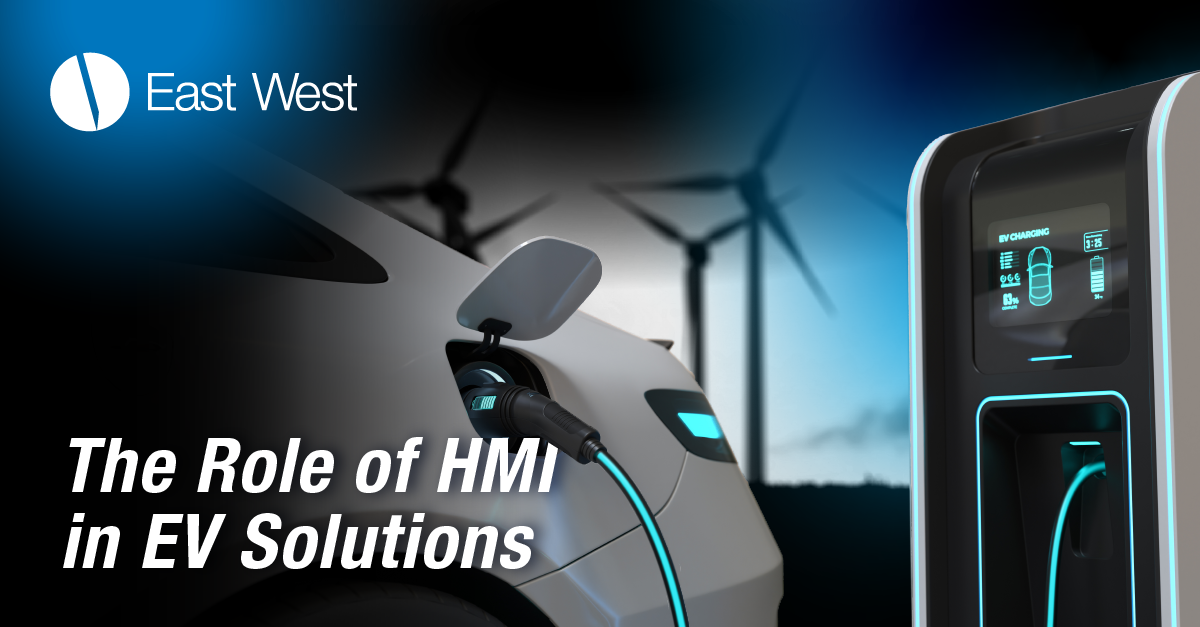The electric vehicle (EV) industry is experiencing remarkable growth, and as more electric cars hit the roads, the need for a reliable and efficient charging infrastructure becomes increasingly evident. While the spotlight often shines on the advancements in EV battery technology and vehicle design, the supporting infrastructure plays a pivotal role in the success of electric mobility. The integration of Human-Machine Interface (HMI) and printed electronics can be game-changing solutions for the EV charging industry.

User-Centric HMI for Enhanced Experience
The success of any technology, including EV charging stations, hinges on its user-friendliness. HMI, through intuitive touchscreens, interactive displays, and user-friendly interfaces, can significantly enhance the user experience. Engineers and industrial designers have the power to make charging stations not just functional but also engaging. A well-designed HMI can provide real-time information, such as charging status, estimated charging time, and even entertainment options during the charging process, making the EV charging experience more pleasant and efficient.
Reliability and Safety
Safety is paramount, and printed electronics play a vital role in ensuring reliability. Printed sensors can monitor various aspects of the charging process, such as temperature and voltage, providing crucial data to both users and operators. For engineers, this means designing robust sensors and safety systems, while designers can create user-friendly interfaces for safety alerts and instructions.
Compact and Aesthetically Pleasing Design
The compact nature of printed electronics enables sleek and unobtrusive charging station designs. With minimal components and a lightweight footprint, charging stations can be strategically placed in urban environments and tight spaces. Industrial designers can utilize these advantages to create aesthetically pleasing charging station designs that blend seamlessly into urban landscapes, a crucial consideration for city planners.
Scalability and Cost-Efficiency
Printed electronics can also play a significant role in scalability and cost-efficiency. The ability to mass-produce printed electronic components in a cost-effective manner allows for the rapid deployment of charging stations. This scalability is of great interest to engineers as it enables the expansion of the EV charging infrastructure to meet growing demand. The best thing you can do is find a manufacturing partner who you can grow with from the prototype stage through to mass production. This will remove many of the headaches and uncertainty that come along with transitioning to new suppliers.
Adaptability and Future-Proofing
In a rapidly evolving industry, adaptability is key. Printed electronics offer the potential to easily upgrade and adapt charging stations to new technologies and standards. Engineers can focus on creating modular designs that allow for the replacement or addition of components as technology advances. This forward-thinking approach ensures that charging stations remain relevant and future-proof.
Integration with Smart Grids
The synergy between printed electronics and HMI extends beyond the charging station itself. Integrating these technologies with smart grids enables seamless communication and coordination between EVs, charging stations, and the power grid. This creates opportunities for dynamic pricing, load management, and grid stability improvements.
The EV charging industry is at the forefront of innovation, driven by the need for sustainable transportation solutions. To fully harness the potential of electric mobility, companies must consider the pivotal role of Human-Machine Interface and printed electronics in the development of charging infrastructure.
The fusion of user-centric HMI, reliability through printed electronics, compact and appealing designs, scalability, adaptability, and integration with smart grids is shaping the future of EV charging.
It's clear that these solutions are not just about plugging in cars but about creating a dynamic and interactive ecosystem that seamlessly integrates with our urban environments.



.jpg?width=176&height=56&name=MR_associatedNetwork_logo%20(1).jpg)